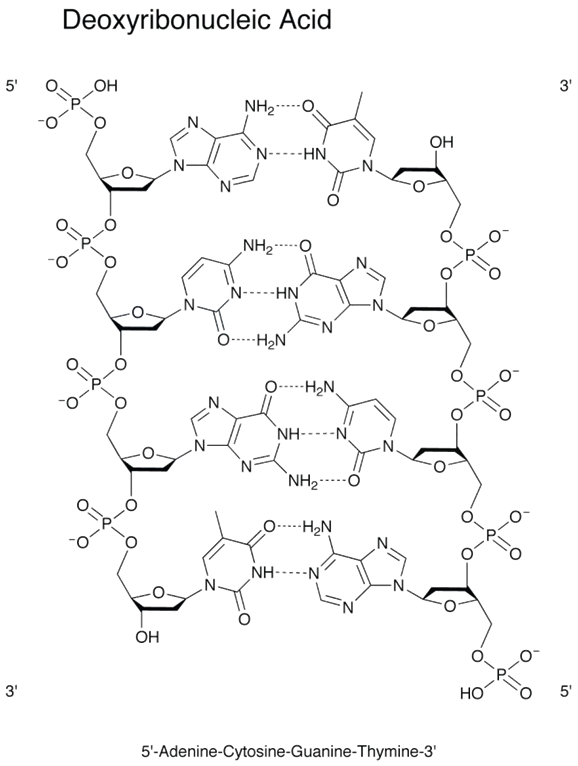Team:NYC Wetware/Deinococcus/Cell Damage
From 2011.igem.org
(Difference between revisions)
| Line 24: | Line 24: | ||
<br/> | <br/> | ||
<img src="http://upload.wikimedia.org/wikipedia/commons/1/1d/DNAPic.png" alt="oy" width="250" height="150"/><br/> | <img src="http://upload.wikimedia.org/wikipedia/commons/1/1d/DNAPic.png" alt="oy" width="250" height="150"/><br/> | ||
| - | |||
| - | |||
| - | |||
<br/> | <br/> | ||
<img src="http://images.wikia.com/genealogy/images/d/d8/Benzopyrene_DNA_adduct_1JDG.png" alt="oy" width="250" height="150"/><br/> | <img src="http://images.wikia.com/genealogy/images/d/d8/Benzopyrene_DNA_adduct_1JDG.png" alt="oy" width="250" height="150"/><br/> | ||
| Line 32: | Line 29: | ||
[Image of Protein with Iron]<br/> | [Image of Protein with Iron]<br/> | ||
<br/> | <br/> | ||
| - | + | <img src="http://upload.wikimedia.org/wikipedia/commons/2/2b/IGEMWikiAug23ImageTheCell.png" alt="oy" width="250" height="150"/><br/> | |
| - | + | ||
<br/> | <br/> | ||
<h3>Damage to the DNA and Proteins</h3> | <h3>Damage to the DNA and Proteins</h3> | ||
The cell is hit repeatedly with radiation, causing extensive damage to the DNA and proteins. The damage to the DNA includes:<br/> | The cell is hit repeatedly with radiation, causing extensive damage to the DNA and proteins. The damage to the DNA includes:<br/> | ||
<br/> | <br/> | ||
| - | 1. Base Damage | + | 1. Base Damage |
| + | <img src="http://upload.wikimedia.org/wikipedia/commons/e/e3/Base_Damage.png" alt="oy" width="250" height="150"/><br/> | ||
| + | <br/> | ||
DNA is composed of a backbone attached to nucleobases. Damage may occur to the bases.<br/> | DNA is composed of a backbone attached to nucleobases. Damage may occur to the bases.<br/> | ||
<br/> | <br/> | ||
| - | 2. Single Strand Breaks | + | 2. Single Strand Breaks |
| + | <img src="http://upload.wikimedia.org/wikipedia/commons/4/4d/SSb.png" alt="oy" width="250" height="150"/><br/> | ||
| + | <br/> | ||
The backbone of DNA is made up of a repeating pattern of sugar and phosphate. A single strand break occurs when this backbone is broken.<br/> | The backbone of DNA is made up of a repeating pattern of sugar and phosphate. A single strand break occurs when this backbone is broken.<br/> | ||
<br/> | <br/> | ||
| - | 3. Double Strand Breaks | + | 3. Double Strand Breaks |
| + | <img src="http://upload.wikimedia.org/wikipedia/commons/4/44/DSb.png" alt="oy" width="250" height="150"/><br/> | ||
| + | <br/> | ||
DNA is commonly found as a double strand. If the opposing strands both develop single strand breaks, this double strand break may cause the separation of the two fragments of DNA.<br/> | DNA is commonly found as a double strand. If the opposing strands both develop single strand breaks, this double strand break may cause the separation of the two fragments of DNA.<br/> | ||
<br/> | <br/> | ||
| Line 53: | Line 55: | ||
Ionizing radiation is radiation with sufficient energy to remove an electron from an atom.<br/> | Ionizing radiation is radiation with sufficient energy to remove an electron from an atom.<br/> | ||
<br/> | <br/> | ||
| - | + | <img src="http://upload.wikimedia.org/wikipedia/commons/4/46/ElectromagSpec.jpg" alt="oy" width="250" height="150"/><br/> | |
| - | + | ||
<br/> | <br/> | ||
Ionizing radiation has the power to cause Double Strand Breaks, as well as initiate the Fenton Reaction, which can cause damage to proteins as well as DNA.<br/> | Ionizing radiation has the power to cause Double Strand Breaks, as well as initiate the Fenton Reaction, which can cause damage to proteins as well as DNA.<br/> | ||
Revision as of 18:27, 8 September 2011

Normal Cell Function
The prokaryotic cell carries on as if it were a normal day. The DNA, the string of code with information to direct the cell’s daily activities, floats freely in the cytoplasm. It allows itself to be transcribed by the RNA into proteins, which reside casually in the cytoplasm, the intracellular environment of the cell.


[Image of Protein with Iron]

Damage to the DNA and Proteins
The cell is hit repeatedly with radiation, causing extensive damage to the DNA and proteins. The damage to the DNA includes:1. Base Damage

DNA is composed of a backbone attached to nucleobases. Damage may occur to the bases.
2. Single Strand Breaks

The backbone of DNA is made up of a repeating pattern of sugar and phosphate. A single strand break occurs when this backbone is broken.
3. Double Strand Breaks

DNA is commonly found as a double strand. If the opposing strands both develop single strand breaks, this double strand break may cause the separation of the two fragments of DNA.
Damage to the protein may include:

Ionizing radiation is radiation with sufficient energy to remove an electron from an atom.

Ionizing radiation has the power to cause Double Strand Breaks, as well as initiate the Fenton Reaction, which can cause damage to proteins as well as DNA.
Fenton Chemistry results in the production of a hydroxyl radical through the oxidation of ferrous iron to ferric iron by means of hydrogen peroxide.
Fe2+ + H2O2 → Fe3+ + OH· + OH−
The ferrous iron is recycled by hydrogen peroxide.
Fe3+ + H2O2 → Fe2+ + OOH· + H+
The hydroxyl radical is very active, and can cause damage to DNA and proteins.
 "
"